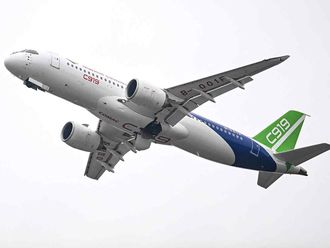Washington: A full-blown war on the Korean peninsula offers up a nightmare scenario that would cause appalling casualties and potentially trigger a nuclear exchange, experts and former officials say.
The crisis provoked by North Korea's artillery attack on a South Korean island this week makes the prospect of an all-out conflict look less remote, and US officials - mindful of the high-stakes - have carefully avoided talk of military action.
With an array of artillery trained on Seoul, North Korea could easily blast the glass towers of the South's booming capital for days and kill huge numbers of civilians before US and South Korean forces prevailed, experts said.
"Official Pentagon models assume it would take months to win the war at a cost approaching one million casualties or more, all told, including dead and wounded," Michael O'Hanlon, a senior fellow at the Brookings Institution, told AFP.
"And that's without nuclear weapons being used," said O'Hanlon, who wrote a book looking at the effects of a potential war.
US and allied military planners have long believed that the North would be overwhelmed in a conventional war, but they worry how Pyongyang would use its arsenal of chemical and biological weapons, as well as its small cache of atomic bombs, said Bruce Bennett, a senior defense analyst at the Rand Corporation.
"The key question is whether or not they can use their WMD (weapons of mass destruction) effectively," Bennett said. "That's the part which we don't really know."
Bennett and some other analysts say North Korea likely will have the ability to fit a nuclear warhead onto one of its missiles within months, and may already have succeeded.
In the first hours and days of a conflict, US warplanes would be focused on taking out nuclear sites, missiles and chemical weapons before the North Koreans had a chance to use them.
Under one war game played out in 2005 by The Atlantic magazine, former military officers and officials concluded that US fighter aircraft would have to carry out up to 4,000 sorties a day to prevent a WMD catastrophe for Seoul and the region.
South Korea has said it believes the North has about 100 nuclear facilities, but in the event of a war, Pyongyang would likely move weapons and atomic material to other locations, including a vast network of underground sites, Bennett said.
"We may not have surveillance that's adequate over all of North Korea in time to monitor where things get moved to," he said.
If the North chose to fire chemical shells into Seoul or strike at air fields with special forces armed with biological weapons, it would run the risk of a massive retaliation from the US military - raising the danger of the world's first nuclear war.
A more likely scenario might have North Korea carrying out a "demonstration" launch of a nuclear weapon, perhaps off the South Korean coast, in a bid to discourage an invasion by superior US and allied forces, O'Hanlon said.
"Using one nuke as a demonstration shot and then withholding others to deter a counter-invasion could be a useful strategy for them," he said.
Fears over the consequences of North Korea armed with working nuclear missiles have led some to call for preemptive strikes.
In 2006, former US defense secretary William Perry, and Ashton Carter, now the head of arms purchases at the Pentagon, argued for launching such a preemptive attack to prevent the North from carrying out a ballistic missile test.
A retired US colonel, John Collins, in 2003 examined a whole series of military options and scenarios with North Korea - ranging from naval blockades to nuclear strikes - and reached a grim conclusion.
"Any of the US options described above could trigger uncontrollable escalation that would create appalling casualties on both sides of the DMZ and promise a Pyrrhic victory at best," he said.











